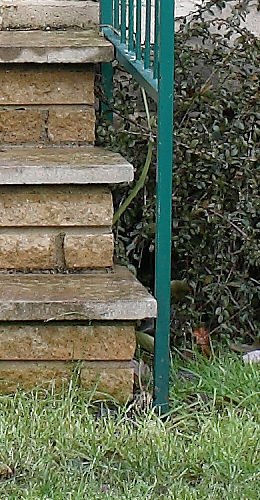A Tale of Two 28mm
Nikon 28mm f2.8 AIS sample variation demonstrated
[published december 2005]
Preliminary to the 28mm group test, two samples of the well-regarded Nikkor 28mm f2.8 AI-S were obtained to compare with the Olympus 28mm f2 and Carl Zeiss Contax 28mm f2.8 Distagon.
Both were sourced from a reputable UK dealer and both had 7XXXXX serial numbers, but they had clearly led quite different lives: sample 763938 arrived in its original metallic printed box and not only had all its original packing and paperwork, it came with receipts for a recent Nikon UK test, clean and calibration. Cosmetically, it was mint. The 52mm filter on the front appeared to have been fixed permanently since the day it left the shop floor. All glass was immaculate. No dust internally. Focus smoother than smooth. This was a seriously cossetted sample, and commanded a top dollar price.
Its scruffier sibling, however, fell from the packing chips naked into my world, bespeaking a somewhat more colourful history: a few minor scuffs on the body, some barely-there marks on the rear element, and yellowed and peeling labels on the front and rear caps. Not quite as liquid-smooth in its focus operation, it still cammed out nicely and the front element was spotless: in my book, sample 736093 was good value at a little over half the price of its showier counterpart. Both samples had identical purple-heavy NIC coatings.
To keep the playing field level, the same aluminium Nikon to EOS adaptor was used and some controlled tests run. You might be interested to see how the best of these samples compares with the Zeiss and Olympus 28mm here.
All images shot in RAW focus bracketed in constant overcast light with a Canon 5D, processed in 8 bit via DPP and converted for web with BoxTop Pro.
100% Centre Frame Crops (f4)
 |
 |
| Nikon 28mm at f4 (sample 763938) | Nikon 28mm at f4 (sample 736093) |
Although the difference is subtle, and might partly be explained by thinner cloud cover and more contrasty lighting, the underdog here looks a little more attractive than the pristine sample: there is more information in the masonry on the step, and in fact the RAW file was larger. In both cases the focus was nailed thanks to up to six-way bracketing.
To see how these lenses look wide open in the corners, read the second part of the 28mm group test. Guess what? They’re rubbish. One stop down, though, a top flight lens should resolve frame extremities fairly well. In fact, I would venture to say that this is one of the most reliable hallmarks of the best designs.
100% Extreme Corner (Zone C) Crops (f4)
 |
 |
| Nikon 28mm at f4 (sample 763938) | Nikon 28mm at f4 (sample 736093) |
I know what I did: the detents on the aperture ring aren’t quite as positive on the older lens, and I must have stopped it down to f5 or thereabouts. Surely there can’t be that much difference between samples…. Here’s a very carefully calibrated reshoot at f4, shot close range at a distance of 70cm:
100% edge and corner crops (f4)
 |
 |
| Nikon 28mm at f4 (sample 763938) | Nikon 28mm at f4 (sample 736093) |
 |
 |
| Nikon 28mm at f4 (sample 763938) | Nikon 28mm at f4 (sample 736093) |
Sample 736093 enjoying a clear advantage: less vignetting and more resolution: the difference is really marked on scanning the entire file. By f11, however, the performance gap has shrunk somewhat…
 |
 |
| Nikon 28mm at f11 (sample 763938) | Nikon 28mm at f11 (sample 736093) |
… but even so the mint sample proves inferior in use.
While previewing these results I was forcibly struck by the recollection of Ken Rockwell’s experience in similar testing: his half-serious theory is that the worse the condition of the Nikon lens, the better its performance will be. This inversely proportional relationship is certainly given credence by this pair! Sample 763938 is on its way back to the dealer; as of 4pm, December 2nd, Sample 736093 is available for sale at £195 + VAT (if applicable), complete with the actual adaptor here tested.
